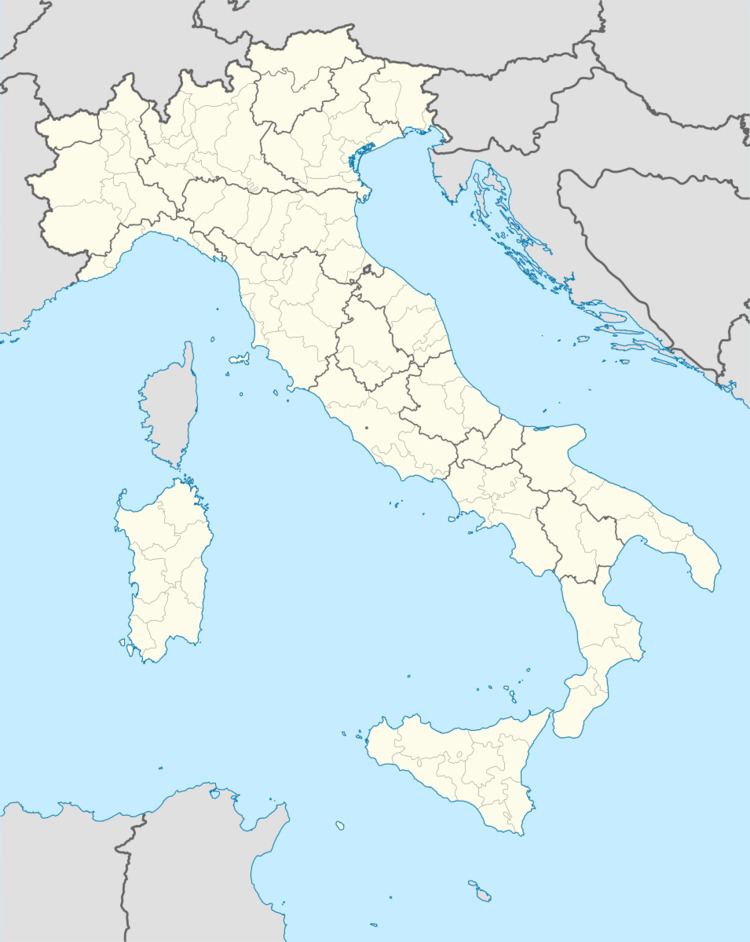Country Italy Demonym(s) Sipontini Postal code 71043 | Elevation 0 m (0 ft) Time zone CET (UTC+1) Local time Wednesday 10:23 PM Dialling code 0884 | |
 | ||
Weather 13°C, Wind W at 8 km/h, 68% Humidity | ||
Siponto (Latin: Sipontum, Greek: Σιπιούς) was an ancient port town and bishopric in Apulia, southern Italy. The town was abandoned after earthquakes in the 13th century; today the area is administered as a frazione of the comune of Manfredonia, in the province of Foggia. Siponto is located around 3 km south of Manfredonia.
Contents
Map of Siponto, Province of Foggia, Italy
History
According to legend, Sipontum was founded by Diomedes, product of the union of the Homeric hero of the same name with the daughter of the king of the Daunians. Siponto was probably founded by the Daunians.
Sipontum was a flourishing Greek colony, its Greek name being Sipious (Σιπιούς); having fallen into the hands of the Samnites, it was retaken about 335 BC by King Alexander of Epirus, uncle of Alexander the Great. In 189 BC it became a Roman colony with its original Sipious name still used in Byzantine times, and in 663 AD it was taken and destroyed by the Slavs.
In the ninth century, Sipontum was for a time in the power of the Saracens; in 1042 the Normans made it the seat of one of their twelve counties. The latter won a decisive victory there over the Byzantine general Argyrus in 1052.
Michael of Zahumlje on 10 July 926 sacked Siponto, which was a Byzantine town in Apulia. It remains unknown did he done this by Tomislav's supreme command as suggested by some historians. Apparently, Tomislav sent the Croatian navy under the Michael's leadership to drive the Saracens from that part of southern Italy and free the city.
Ancient bishopric
According to legend, the Gospel was preached at Sipontum by Saint Peter and by Saint Mark; more trust, however, may be placed in the tradition of the martyrdom of the priest Saint Justin and his companions under Gallienus and Maximian about 255.
A bishopric of Sipontum (or Siponto) was established around 400 AD (or already in the third century according to others). The first bishop whose date may be fixed, was Felix, who was at Rome in 465.
In the time of bishop Laurence of Siponto, during the papacy of Gelasius I (492-496), took place on Monte Gargano the apparition of Saint Michael, in memory of which the famous Monastery of the Archangel was founded.
Other residential bishops were
About 688 it was suppressed, as Pope Vitalian was obliged to entrust to the then bishopric of Benevento, into which it merged, the pastoral care of Sipontum, which was almost abandoned.
New (arch)bishopric
The see was re-established in 1034 as Diocese of Siponto, recovering its territory from the meanwhile Metropolitan Archdiocese of Benevento.
Suffragan Bishops of Siponto were :
Under bishop Saint Gerard(o) (1066-74) it became the non-Metropolitan Archdiocese of Siponto in 1074.
Non-Metropolitan Archbishops of Siponto were :
In 1090 it lost territory to establish the Diocese of Vieste.
In 1099 it was promoted as Metropolitan Archdiocese of Siponto
Metropolitan Archbishops of Siponto were :
The ancient cathedral remained still at Sipontum, but, with the building of the city Manfredonia by and named after King Manfred of Sicily, who decided to 'rebuild Siponto' in a new nearby location, the archiepiscopal see was transferred to the new town in 1230, under its new title Metropolitan Archdiocese of Manfredonia (viz.), yet still Sipontin(us) as Latin adjective.
